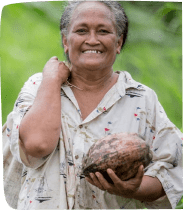This report presents a detailed analysis of how the Government of Israel has systematically weaponized water against the Palestinians in its latest assault on Gaza, raising grave concerns of human rights violations and breaches of international law. It highlights ongoing violations of international laws, showing how the Government of Israel has used water deprivation to dehumanize and ultimately threaten Palestinian lives since the 1993 Oslo Accords. This culminates, in a brutal fashion, in the current military operation in Gaza.
The UN Commission of Inquiry finds that Israel’s military operations and civilian policies relating to water in Gaza, following the attacks by Palestinian armed groups on Israel on 7 October 2023, are indiscriminate and disproportionate. The ‘total siege’ which the Government of Israel is using to collectively punish the entire civilian population in Gaza, including restrictions on water, electricity, fuel deliveries and the entry of essential supplies, has compounded the suffering of a population that is now on the brink of famine. The Israeli military’s continuous and extensive bombardment, which has destroyed key roads and essential civilian infrastructure, has further debilitated humanitarian efforts, leaving the population in dire conditions.
Key findings include:
The systematic destruction and obstruction of Gaza’s water and sanitation infrastructure has led to severe water shortages and health crises. Oxfam’s detailed breakdown shows significant damage to water production wells, storage reservoirs, desalination plants and wastewater facilities, drastically reducing water availability and creating unsanitary conditions. Oxfam’s attempts to import critical supplies like water desalination units and repair materials have been obstructed by Israeli restrictions.
The systematic destruction of water facilities, bureaucratic hurdles blocking humanitarian supplies, and inflammatory statements by Israeli officials12 show that the Israeli government is at best reckless as to the humanitarian crisis and its IHL duty to protect civilians. Israel’s military approach has created conditions of destruction and widespread suffering, underscoring the severe nature of the crisis in Gaza resulting from a policy of deprivation and denial.
Read the full report: Water War Crimes report





